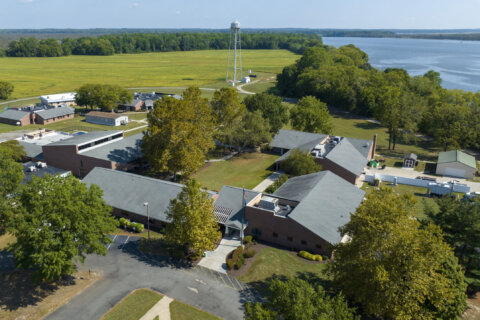One of the latest patients taken to a Virginia wildlife center for medical care didn’t have fur or feathers, but it was covered in quills.
An adult porcupine was found in parking garage in Winchester, Virginia, and police brought him to the Blue Ridge Wildlife Center in Clarke County on Thursday.
Every wild animal can present a challenge when handling is required for medical care.
Great blue herons with their long, sharp bills are sometimes called “stabby” by rehabilitators. Panicky mammals may bite or claw when being handled by humans.
Dr. Jen Riley, who provides the veterinary care at the center, said in many cases, anesthetic agents are, “The way we put our hands on these guys.”
Riley said there’s something called an induction chamber box, where an anesthetic can be applied, and once the animal is sedated, they can be safely examined.
“Luckily, porcupines are really well-behaved,” Riley said. They tend to allow themselves to be guided from a box to a crate, for example.
It’s unusual to get a porcupine as a patient. First, they tend to be found in densely forested areas. And they were considered nearly extinct in Virginia by the late 1800s.

But there have been more sightings in the region over the last 20 to 35 years, Riley said; and there have been more periodic sightings in the northwestern portion of Virginia.
Riley’s recent patient was unusual for another reason. “He came to us from a parking garage in Winchester.”
A lot of porcupine sightings have come from Frederick County in Virginia, and in many cases, in downtown, Winchester, according to Riley.
The adult male porcupine was initially in pretty rough shape. It had a lung infection and was missing some quills.
“When he first came in he wasn’t looking too great,” Riley said. “He wasn’t really eating for us, but now he has started to eat. So he’s taking his antibiotics, and the lung infection appears to be improving.”
If the porcupine fully recovers, it could be released in a week, she said.
Porcupines are considered “ecosystem engineers,” Riley said. That means they change the environment around them. While beavers are well-known dam-builders, porcupines disturb the soil as they forage for food, and they also gnaw on the bark of trees.
While many people may be fearful of porcupines because of those sharp quills, Riley said they cannot launch their quills at attackers. That’s a myth. When they defend themselves, they will rattle their quills, and bristle. If an attacker doesn’t back off, they may take a swipe at the aggressor with their quill-covered tail.
While porcupines may not be cuddly, they do have their fans, including Riley, who finds them cute.
And fun fact: Porcupine babies are called porcupettes.
“A super-cute word that people should know,” Riley said.








